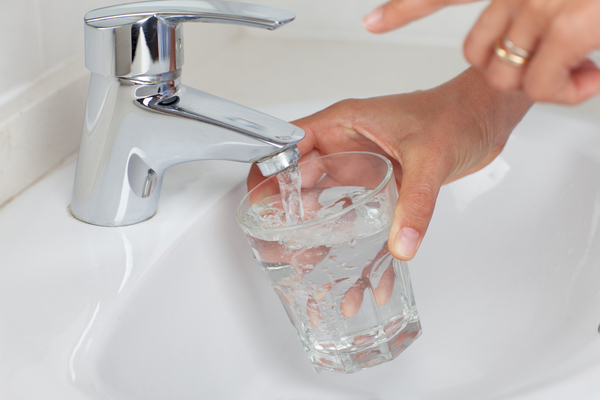Cancer-causing contaminants may be in your drinking water, according to a new study published in the journal Heliyon. Scientists at the Environmental Working Group (EWG) analyzed pollutants in tap water from 2010 to 2017. They found 22 carcinogenic contaminants — including arsenic, disinfection byproducts, and radioactive contaminants, such as uranium and radium — in drinking water nationwide, which researchers estimate could, over the course of an average lifetime (about 70 years), lead to 100,000 cases of cancer.
In the study, EWG scientists calculated the cumulative health effects of these carcinogens in more than 48,000 community water systems in the U.S. (not including the 13.5 million Americans who rely on private wells for drinking water). “The results of this analysis show that, over a lifetime of exposure to these contaminants in drinking water, we would expect that 100,000 cancer cases in the United States would be due to these drinking water contaminants,” says Sydney Evans, lead author of the study and a science analyst at EWG. “Contaminants present in drinking water all across the United States — at concentrations that are perfectly legal and get a passing grade from federal government — can still increase the risk of cancer.”
She adds: “Right now, water contaminants are assessed and regulated one at a time, but mixtures of a large number of contaminants are present in tap water. This cumulative risk assessment will help to estimate how mixtures of chemicals might affect health, so that community water systems and elected officials can look for new approaches to better protect water quality.”
The analysis also found that water systems with the highest risk tend to be small groundwater systems. “These systems typically lack the resources, funding, and infrastructure to effectively manage water contamination, and arsenic — a potent carcinogen — is typically found in groundwater,” says Evans.
But larger water systems aren’t necessarily safer. Evans says they also show “consistently elevated risk” because they contain disinfection byproducts, which are a result of required disinfection. “Parts of the country where source water has a high level of organic waste — like manure, dead vegetation, agricultural and urban run-off — tend to have higher levels of disinfection byproducts, which could result in an increased risk of cancer,” she says.
Evans also points out that the study only assessed 22 carcinogenic contaminants and noted that this is not an exhaustive list. “There are contaminants in drinking water that pose health risks other than cancer,” she says.
So what can you do to protect your health in the meantime? Evans recommends that consumers find out what contaminants are in their tap water from either local water quality reports or the EWG Tap Water Database, which lets you search by zip code.
Next, install a water filter (EWG has an online water filter buying guide) that works best for your local tap water, depending on the specific contaminants in your area. “Even if detected contaminants are below the federal legal limits, we recommend filtering the drinking water,” Evans says.
—
Photo Credit: Adam Gregor / Shutterstock.com
